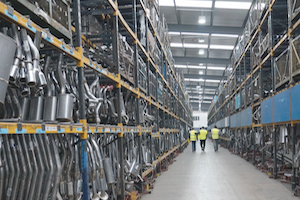
Businesses need to get up to speed with the soon to be compulsory Real Time Information (RTI) that will overhaul the way PAYE works in the UK, says Jason Piper.
Having been with us since 1944, PAYE was originally set up to aid collection of taxes during the Second World War. Changes in work patterns, payments and the sheer volume of information handled by the system have left it straining to cope, however.
So why change?
PAYE was designed to run on paper. Reconciling all the information by hand used to take months – many weeks even on computers – as there were over a dozen different systems around the country that couldn’t automatically cross check each other.
What’s worse, as computers took over the processing of the information, tiny errors and inconsistencies that a human would have simply ignored or amended became a major stumbling block. Some taxpayers had multiple records.
HMRC now has a single computer able to process year end information in just two or three days, however, although the system needs faster information feed in, and in a more consistent format.
Why now?
PAYE is a hugely important part of the UK tax system and the business environment. The process of implementing RTI has to be complete by October 2013 and the next PAYE year that businesses open will need to be RTI ready.
The reason for the rush is the overhaul of the benefits system and the introduction by the Department of Work and Pensions (DWP) of the Universal Credit. Both need accurate detailed information about the tax and National Insurance position of every person in the country receiving any type of benefit. Universal Credit is due to go live in October 2013, so DWP need the systems feeding information in to them to be up and running by then.
OK, so what do I need to do about it?
If you use an outside specialist or bookkeeper to submit your returns you need to make sure they’re up to speed. Talk to them now about who is going to do what and when.
If you do your own payroll, then you’ll need to take care of things yourself. Software providers have been working closely alongside HMRC to try and work out what needs to change and what can be kept.
HMRC are upgrading their software (available free if you’ve nine or fewer employees) and software firms have been running pilot programs across the country with 300 employers from April this year. Another 1,300 started in July, and up to 250,000 will join the party in November.

Perhaps the most important thing you can do is tidy your payroll data. Because the new system is totally computer driven, it will spit out any inconsistent information as being wrong; you shouldn’t be submitting records in the name of AN Other, or A Student anyway. At the very least, you’ll need the NI number, date of birth and full name for each employee. It’s worth bearing in mind that if you regularly get your RTI submissions returned, you’re likely to move up HMRC’s ‘at risk’ register for a PAYE visit. With monthly returns, HMRC will also get a much quicker idea of whether you’re having problems than under the old annual system.
The system will want to know how many hours have been worked by each employee in the pay period. Of course this may not be a problem if everyone is on fixed hours, and paid well above the national minimum wage, but if you’ve got many part time workers on the payroll you’ll need to look at how you capture that information and get it into the system.
On the plus side, the year end forms (P35, P14a and P38As) will no longer be needed, and you also won’t need to send P45s to HMRC or complete a P46. Employees will still need a P60, and expenses and benefits will still need to be reported on a P11D/P11(b), however.
It’s worth bearing in mind that it won’t just be your employees who lose out if their tax and NICs records are wrong. In 2011, HMRC introduced a controversial new set of ‘in year’ penalties for PAYE record keeping failures, and while there’s likely to be some sort of soft landing for issues relating to the RTI system, relying on that is a dangerous game to play. The new penalties can quickly run into thousands and you’ll still have to spend the time sorting out your records after spending the cash on the penalty.











Go to comments